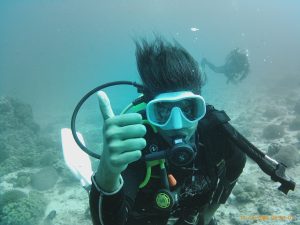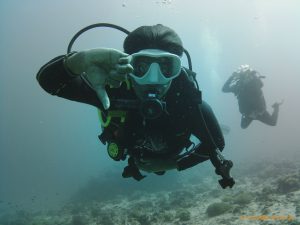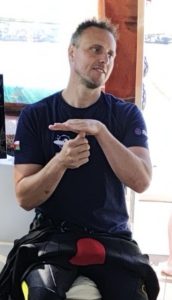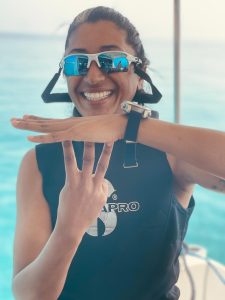Ask any diver what they enjoy about scuba diving. Most will describe the absolute peace and tranquility of being at depth. Some will discuss the intense pleasure of not having to speak to anyone. So… how do you communicate with your buddies, dive master and other divers during a dive? Hand signals are the most common form of underwater communication. Let’s take a look at some of the most important ones to know.
OK / Are you okay?
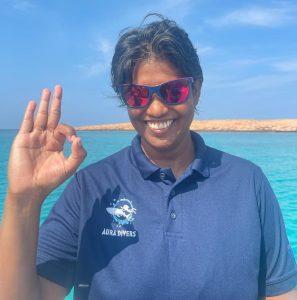
The OK signal is the most important signal when it comes to diving. The ok is both a question and an answer. Join the thumb and index fingers while extending your third, fourth and fifth finger. The thumbs up signal indicates to go upwards or the end of a dive.
There’s a problem
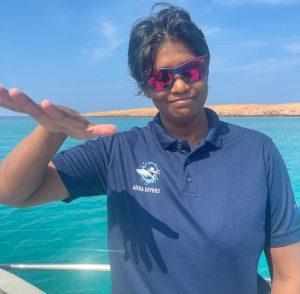
Have your palm flat and slowly move your hand from side to side, followed by where the problem is. Whether it’s equalizing, your weight belt or something else, pointing out where the problem is will help your dive master, instructor or buddy to know what the issue is.
OK and problem at the surface
An OK at the surface is done by joining your hands above your head and can be used to signal the boat or lookout that you’re doing OK. This can also be done using one hand depending how far you are from the boat or shore. A problem at the surface is signaled by waving both hands and yelling ‘help.’
Thumbs up or down
Thumbs up can signal to ascend or the end of a dive. When you see this signal, you should also signal thumbs up to show that you’ve understood it’s time to ascend. A thumbs down is used to signal that the diver should descend.
Look at me or look over there
A scuba instructor will point at their eyes then at themselves to show students that they should look at what they’re about to demonstrate. A dive master during a fun dive may point at their eyes then in a direction to show that people should look in that direction.
Level off or stay at my level
Used to tell other divers to maintain their depth. It’s commonly used when you’ve reached your planned maximum depth or to tell divers to hold their depth for safety reasons. Extend your palm and move it slowly from side to side horizontally.
Buddy up
If you’re too far from your buddy, you may be asked to buddy up. This is done by using both index fingers and placing them close together.
Safety stop
A three minute safety stop at five meters is demonstrated by a flat open hand with your other hand below it indicating three. This means that divers should level off and start their safety stop.
Decompression
The deco signal can be done by either raising a pinky or raising a pinky and thumb. This signal is used in the event that a diver has passed their no-decompression limit and to communicate the need for an extra safety stop.
Low on air
Once you’ve reached 50 bar or go into the red on your gauge, you should signal to all other divers that you are low on air. This is done by placing a fist in front of your chest.
Out of air
 In the unlikely event that you run out of air during a dive and other buddies are close by. You can signal you have run out of air by moving a flat hand across your throat which indicates your air supply has been cut off. Your buddy should then give you their alternate and you can start to ascend.
In the unlikely event that you run out of air during a dive and other buddies are close by. You can signal you have run out of air by moving a flat hand across your throat which indicates your air supply has been cut off. Your buddy should then give you their alternate and you can start to ascend.
How much air do you have?
Your dive master and buddies may ask you how much air you have during a dive so you can adjust your dive depending on how much air the group has left. This is done by placing your index and middle finger into the palm of your other hand and tapping. To signal half a tank, form a time-out with your hands, 50 bar is done with a closed fist. Each additional 10 bar is indicated with the fingers on your other hand.
Stop/hold
You may be asked to stop or hold a position. To indicate this, hold a flat hand pointing forward or hold your forearm up and make a closed fist.
Come here
An open hand and moving your fingers towards yourself in a beckoning motion is used to signal to other divers to come here.
Now we’ve taken a look at some of the most popular underwater hand signals. What’s your favourite one to use during a dive?




